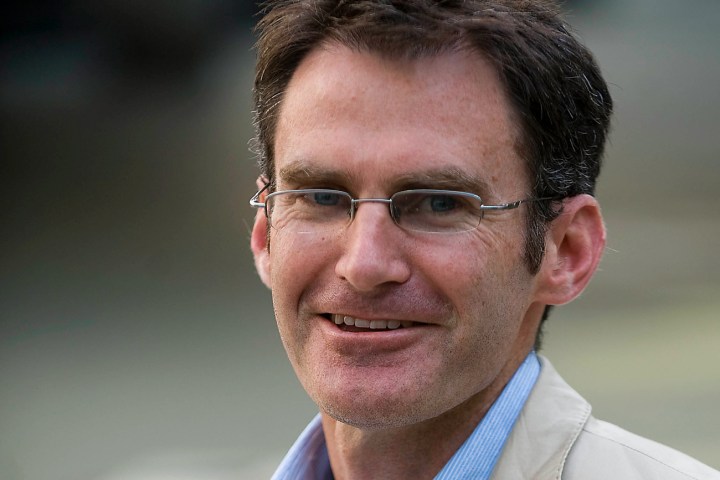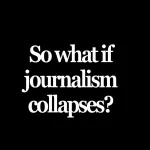Media
SA gets Muhammad cartoon controversy (mostly) right

Let's not be overly modest about it. Elsewhere in the world newspapers and Muslims still aren't on speaking terms after similar incidents. When the Mail & Guardian met with Muslim leaders, this week, everybody left happier than they were walking in.
When the M&G published a cartoon depicting the Prophet Muhammad on Friday, it got a couple of threatening phone calls, and there was talk of a boycott. When the paper met with religious leaders on Thursday, however, there was what the parties describe as frankness and respect.
The Muslim community in South Africa is unlike any other Muslim community in the world, said Sheikh Achmat Sedick, deputy president of the Muslim Judicial Council. It is because of the diversity in this country, he contends, that local Muslims are characterised by patience and greater acceptance of tensions between different religions. “If you look at my family, my granny was a Christian, and in our communities we have intermarriage between Muslims and Christians and, in some cases, even Jews,” said Sedick. “We are a much more tolerant community and have learnt to treat one another with respect, which is a key factor in why we are able to [engage in] dialogue with one another and resolve issues.”
Mail & Guardian’s publishing of the cartoon by Zapiro (satirist Jonathan Shapiro) created a serious crisis for the relationship between the media and the Muslim community, but also opened national debate on the issue of portraying the Prophet Muhammad as a caricature. For the first time we weren’t debating the Danish or academic notions of Muslim religious values and the freedom of speech, but were having passionate and frank discussions about an issue unfolding in our own backyard. Yes, there was the usual hate speech and unbridled anger. But that gave way to robust debate that culminated in a meeting between clerics, community leaders, lawyers and the Mail & Guardian’s editor Nic Dawes, CEO Hoosain Karjieker and Shapiro. And it ended in agreement.
“We viewed the Mail & Guardian’s willingness to come forward and (engage in) dialogue as very mature, and we view the meeting as a victory for tolerance, respect and understanding,” said Sedick. “The dialogue between us was very frank and amicable, and the meeting was managed in a dignified, responsible and very respectable way. I think there is much the world could learn from how the issue was handled in South Africa.”
That is in stark contrast to anger around the cartoon, which sparked a media frenzy reaching as far as China, India and the UK.
“I really didn’t expect the kind of reaction the cartoon provoked,” said Dawes. “I thought that because South Africa is not an Islamophobic country that Muslims here wouldn’t feel the same sense of siege as they did with the Danish cartoons.” Dawes said what he missed was the sense of connection between South African Muslims and the international politics of Islam, together with the intensity with which the ban on the representation of Muhammad is held.
Dawes said the debate has been useful, and he’s right. People outside of the Muslim community following the story, and journalists covering it, now know more about the theological, political and media issues that surrounded the debate. As a journalist I have a stronger appreciation that religious leaders shouldn’t be setting the media agenda or controlling editorial policy. But by the same token there appears to be greater understanding of Muslim religious values which could mean greater sensitivity and insight the next time difficult editorial decisions need to be made.
The outcome of the Mail & Guardian meeting was a carefully worded joint statement that highlighted the complexity of the issue. The Mail & Guardian apologised for the unintended consequences of publishing the cartoon, saying it had “in no way intended to cause injury, or to associate itself with Islamophobia, which it repudiates in the strongest possible terms.” The statement said the paper would be reviewing its editorial policy on religious matters and committed itself to not publish representations of the prophet during the review period. Dawes said this review could take a number of months.
Late on Wednesday, The National Press Club entered the fray and, in a sadly counter-productive move, reduced that nuanced and carefully worded statement that was agreed by all parties to the following, rather blunt interpretation: “We have been informed that the Mail & Guardian has apologised for publishing the offensive cartoon, drawn by cartoonist Zapiro, and that Muslim leaders have accepted the apology.” Formerly known as the Pretoria Press Club and populated largely by Pretoria journalists and public relations practitioners, it is somewhat questionable as to why the club chooses to position itself as a national body that speaks for the media to the media – and then gets its facts wrong.
Maybe the next time there is a clash between a belief and the media, the sensitivity and understanding will also extend to those who set themselves up to comment on events.
By Mandy de Waal
Read more: Mail & Guardian’s statement, and it’s report on its meeting with Muslim leaders. See also The Daily Maverick’s original report on the publication of the cartoon.
Photo: M&G editor, Nic Dawes


















 Become an Insider
Become an Insider